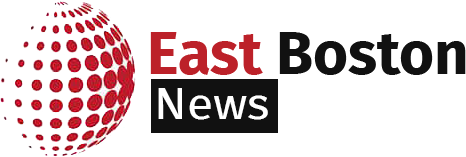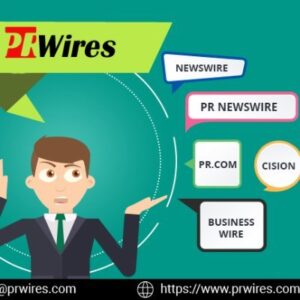Introduction
The goal of your press release is to get the attention of journalists and other industry professionals, and it’s important that you do so in an effective way. A good event press release example will help you do just that!
Choose the Type of Event Press Release Example You Want to Create
Now that you've decided on the type of event press release example you want to create, it's time to choose between a case study or case analysis. A case study is similar to an academic paper: it provides an overview of a single event and includes quotes from people involved in that event. A case analysis is different because it goes deeper than just reporting what happened: instead, it analyzes why this happened and how it could be avoided in the future. This can be helpful if there are no more newsworthy events happening around your company at present—or if there are so many new ones coming up that they're overwhelming!
What is a Press Release for an Event?
A press release is a marketing tool that can be used to promote events, products and services. It's also used to announce new hires or promotions, as well as partnerships with other companies.
A press release usually contains the following information:
The headline of your story (the first sentence of your body)
The date you published it on the Internet (the date and time of publication)
Your name (first and last)
You'll find more about how to write effective headlines later in this chapter.
Why Use a Sample Press Release for an Event?
When you're writing your own press release for an event, it can be difficult to know where to start. You might have a great idea for what should go into a press release, but if you don't know how to get started with the process of actually creating one yourself, then all your efforts will be wasted.
That's why we recommend using our sample Press Release Template as a guide when setting up this type of document. With this template in hand and some basic formatting knowledge under your belt (see below), writing up an effective event-specific piece should be easier than ever before!
Formatting Your Media Release Template
Once you have your outline, it's time to format the release. You can use a template or create your own by following these steps:
Find a boilerplate (a pre-made press release) that works for your industry and business. For example, if you're an event organizer, look at other events' templates from this year and see what they did well; make sure to take notes on how their formatting worked out so that you can make adjustments as needed in yours!
Use the boilerplates provided by EventBrite (and others) as guides for how specific parts should look like—for example, if there is no place where someone could sign up for tickets yet but instead says "Register Here," then write about how guests could do so here instead of someplace else further down in text).
3 . Make sure all sections are filled out with relevant information (like who wrote it and when), especially since having errors will make people think less highly of what they read online!
How to Write a Case Study (Including Template & Examples)
A case study is a piece of writing that describes a person, organization or other entity and their role in the field. They are often used as examples when writing about specific events or situations.
A good example of this type of content could be: "A recent study showed that using social media effectively can help businesses grow."
There are many different formats for how you can write your own case studies; however, there are some basic guidelines you should follow when crafting these pieces:
Use plain language rather than technical terms (unless specifically needed)
Keep it short - ideally between 300-500 words max! If possible make sure you don't overdo it by including too many elements within the article itself like bullets lists etc.. This will make it harder for readers to digest everything which defeats its purpose altogether!
Why Use a Case Study Interview Example?
The Case Study Interview example is an excellent way to showcase your skills and experience. By using this format, you can demonstrate that you have the right experience for the job at hand.
On top of that, it will show potential clients how effective you are when working under pressure and communicating with others.
Additionally, by using this example in your press release template for Event 2022 (which we will explain below), it’ll also demonstrate that you're an excellent listener who can take direction well from others without being too intimidated or resistant about changing their ideas into something even better than what they originally had planned out!
Formatting Your Case Study Interview Template
A case study interview template is a great way to help you focus on the main points of your press release. It also helps you avoid repeating yourself, which can be overwhelming when writing a lot of content in one day.
A case study interview is a structured conversation with someone who has experienced the same thing as your customer or client; it's like an interview but with less personal questions and more focused on what they did and how they felt about it. You'll likely have at least one person for each section (i.e., introduction and conclusion) so decide beforehand which topics should go into each part:
How to Write a Case Analysis (Example Included)
A case study interview is a text-based format that allows you to ask questions about a specific individual or organization. The goal of this type of article is to provide context for your readers, who may not be familiar with the topic at hand.
Here's how it works: You'll start by introducing yourself as a writer who has interviewed someone else in the past and then describe what led up to the interview (and why). Next comes some background on your subject matter—what inspired you to write about them? What questions did they answer? How have their answers changed over time? This is followed by questions from yourself (or another writer) asking more detail-oriented questions related as possible directions forward while also providing an opportunity for further clarification or elaboration if necessary. Finally there's space where readers can respond directly through comments section below each question so long as they're respectful toward those involved!
How to Write Work Experience (Including Examples)
Include the name of your company and its location in your work experience. If you have a business that is doing research or marketing, include these details as well.
List out your job title, start and end dates of employment, number of hours worked per week, location where they were based out of (city/state), brief description of duties performed (e.g., "I was responsible for maintaining customer relations at this company.").
Creating case analyses are now simpler and easier to format.
Case studies are a great way to show how your product or service works. They can also be used in press releases, case studies and other marketing materials. If you have a product that connects with customers on an emotional level, such as a restaurant that delivers freshly prepared meals to your door, then creating case studies about this aspect of the business could be very effective for generating publicity (and potential customers).
Here's why:
Case studies allow readers to get inside the head of someone who is using the product/service being examined—not just looking at it from afar but actually experiencing it firsthand. This makes them feel more connected with what they're reading about and helps make it easier for people who aren't familiar with similar products/services but might want one anyway because of how well-known they've become through word-of-mouth recommendations from friends or family members who've tried them out themselves first hand instead of only hearing second hand information about something unknown through third parties who may not share those same interests usually associated with those topics being discussed here today...
Conclusion
This is the end of Part 2 in our series on how to write a press release for an event and what makes a good press release template. In this post we gave you examples of each type of press release that can be used for events and also provided tips on how to format them properly so they will look professional when printed out on paper or uploaded online.
Get in Touch!
Website – https://www.pressreleasepower.com
Skype – shalabh.mishra
Telegram – shalabhmishra
Email –contact@pressreleasepower.com
Mobile – +1 (855) 222-4111

.jpg)
.jpg)





 English (US) ·
English (US) ·